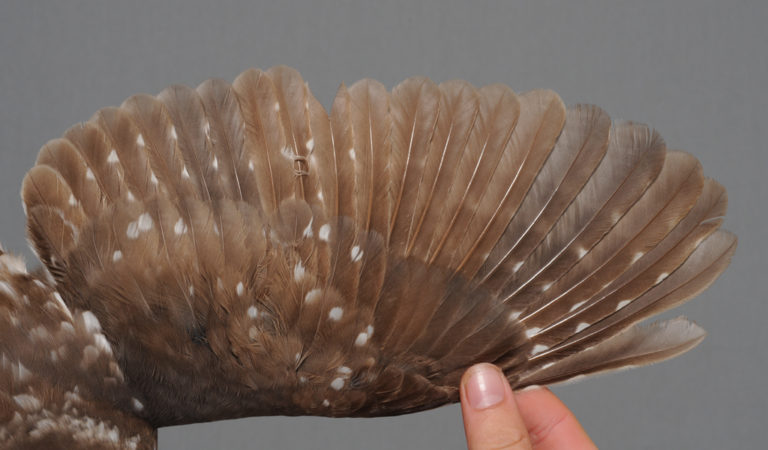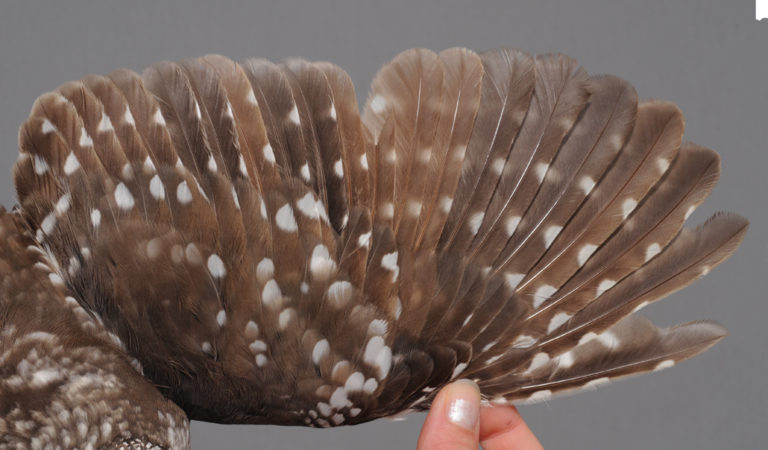

Tengmalm’s Owl
AGE – BEST CRITERIA:
In 1cy, all PP and SS are uniformly juvenile lacking moult contrasts. In older age classes the moult wave works through the hand (inwards) and the arm (outwards) according to the description below.
1cy:
2cy:
3cy:
4cy+:

3cy October. A rather typical bird showing three generations of SS and PP in the wing. PP1-4 are first post-breeding (intermediate wear), PP5-6 are second post-breeding (fresh) and PP7-10 are juvenile (worn). SS1-4 are juvenile, SS5-6 are second post-breeding and the rest are first post-breeding. [7133163]

3cy October, showing variation and irregular sequence in the moult. PP1-4 are first post-breeding (intermediate wear), PP5-7 are second post-breeding (fresh) and PP8-10 are juvenile (worn). S1 and S4 are juvenile, SS2-3 and SS5-6 are second post-breeding and the rest are first post-breeding. [7133174]

4cy+ October. Recently moulted PP8-9 as well as (a new wave) PP1-3. This state of moult is typical for 4cy, and the retained innermost P10 seem juvenile (much worn and rather narrow), giving further confidens to the age being 4cy (rather than 4cy+). But in older age classes, similar patterns will reappear with an interval of a few years, and if the innermost P10 is not juvenile (but instead a retained worn feather from an adult generation) the wing would be very difficult to separate from the one shown here. For this reason, we find it advisable not to go further than 4cy+ in birds looing like this. [7133087]

5cy+ October. Some fully adult birds that show a complex pattern of moult waves that is more advanced than expected in a 4cy bird may tentatively be called 5cy+. However, since individual variation in wear and moult is a true pitfall, it's important to acknowledge a certain insecurity to this age class. [7133107]
More Aegolius funereus:
Ringers’ DigiGuide is sponsored by: